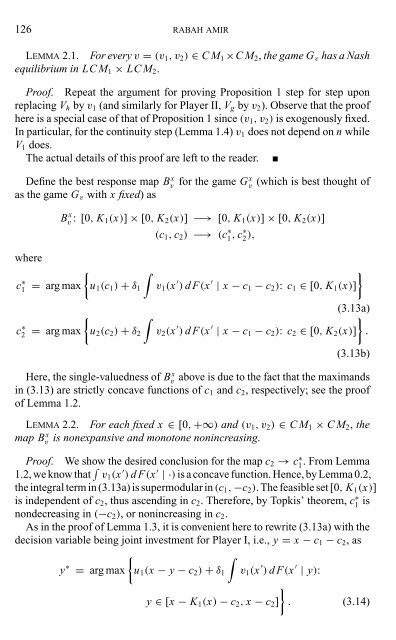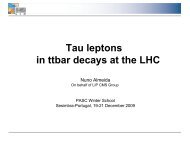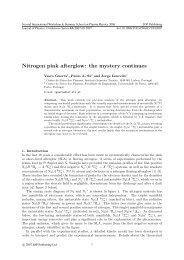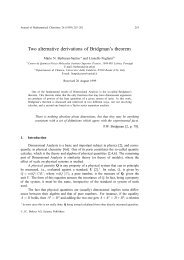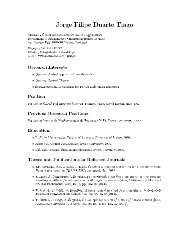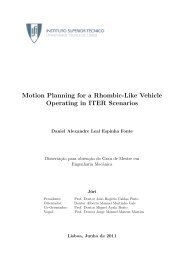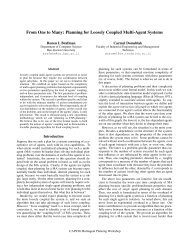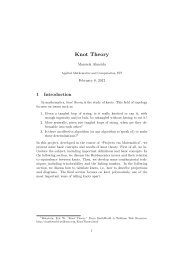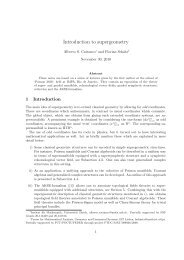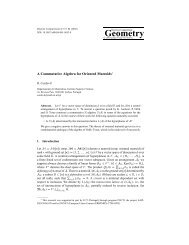Cournot Oligopoly and the Theory of Supermodular Games
Cournot Oligopoly and the Theory of Supermodular Games
Cournot Oligopoly and the Theory of Supermodular Games
You also want an ePaper? Increase the reach of your titles
YUMPU automatically turns print PDFs into web optimized ePapers that Google loves.
126 RABAH AMIRLEMMA 2.1. For every v = (v 1 ,v 2 )∈CM 1 ×CM 2 ,<strong>the</strong> game G v has a Nashequilibrium in LC M 1 × LCM 2 .Pro<strong>of</strong>. Repeat <strong>the</strong> argument for proving Proposition 1 step for step uponreplacing V h by v 1 (<strong>and</strong> similarly for Player II, V g by v 2 ). Observe that <strong>the</strong> pro<strong>of</strong>here is a special case <strong>of</strong> that <strong>of</strong> Proposition 1 since (v 1 ,v 2 )is exogenously fixed.In particular, for <strong>the</strong> continuity step (Lemma 1.4) v 1 does not depend on n whileV 1 does.The actual details <strong>of</strong> this pro<strong>of</strong> are left to <strong>the</strong> reader.Define <strong>the</strong> best response map Bv x for <strong>the</strong> game Gx v (which is best thought <strong>of</strong>as <strong>the</strong> game G v with x fixed)asBv x :[0,K 1(x)]×[0, K 2 (x)] −→ [0, K 1 (x)] × [0, K 2 (x)](c 1 , c 2 ) −→ (c1 ∗ , c 2 ∗ ),wherec ∗ 1 = arg max {u 1 (c 1 ) + δ 1∫c ∗ 2 = arg max {u 2 (c 2 ) + δ 2∫}v 1 (x ′ ) dF(x ′ | x −c 1 −c 2 ): c 1 ∈ [0, K 1 (x)](3.13a)}v 2 (x ′ ) dF(x ′ | x −c 1 −c 2 ): c 2 ∈ [0, K 2 (x)] .(3.13b)Here, <strong>the</strong> single-valuedness <strong>of</strong> Bv x above is due to <strong>the</strong> fact that <strong>the</strong> maxim<strong>and</strong>sin (3.13) are strictly concave functions <strong>of</strong> c 1 <strong>and</strong> c 2 , respectively; see <strong>the</strong> pro<strong>of</strong><strong>of</strong> Lemma 1.2.LEMMA 2.2. For each fixed x ∈ [0, +∞) <strong>and</strong> (v 1 ,v 2 ) ∈ CM 1 ×CM 2 , <strong>the</strong>map Bv x is nonexpansive <strong>and</strong> monotone nonincreasing.Pro<strong>of</strong>. We show <strong>the</strong> desired conclusion for <strong>the</strong> map c 2 → c1 ∗ . From Lemma1.2, we know that ∫ v 1 (x ′ ) dF(x ′ |·)is a concave function. Hence, by Lemma 0.2,<strong>the</strong> integral term in (3.13a) is supermodular in (c 1 , −c 2 ). The feasible set [0, K 1 (x)]is independent <strong>of</strong> c 2 , thus ascending in c 2 . Therefore, by Topkis’ <strong>the</strong>orem, c1 ∗ isnondecreasing in (−c 2 ), or nonincreasing in c 2 .As in <strong>the</strong> pro<strong>of</strong> <strong>of</strong> Lemma 1.3, it is convenient here to rewrite (3.13a) with <strong>the</strong>decision variable being joint investment for Player I, i.e., y = x − c 1 − c 2 ,as∫y ∗ = arg max{u 1 (x − y − c 2 ) + δ 1 v 1 (x ′ ) dF(x ′ | y):}y ∈ [x − K 1 (x)−c 2 ,x −c 2 ] . (3.14)


